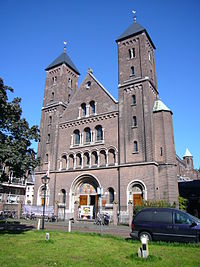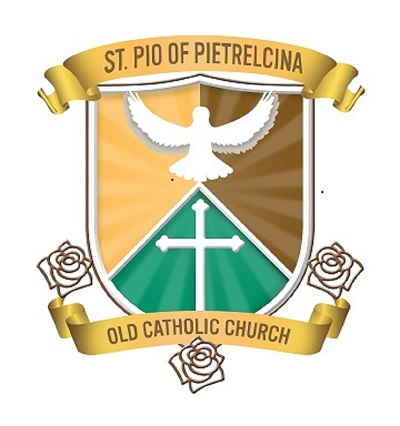The Church traces its origin to the Ancient Catholic Church of the Netherlands, the See of Utrecht.
St. Willibrord evangelized the Netherlands, bringing Catholicism to the country, in the 7th century.
Willibrord had been consecrated by Pope Sergius I in 696 in Rome. In 1145, Pope Eugene III granted the Cathedral Chapter of Utrecht the right to elect bishops, after such been requested by the Holy Roman Emperor Conrad III and Bishop Heribert of Utrecht. The Fourth Lateran Council confirmed this in 1215. In 1520, Pope Leo X issued the papal bull Debitum Pastoralis, giving extraordinary powers to Philip of Burgundy, 57th Bishop of Utrecht, essentially removing the ability of any external authority to “in the first instance, have his cause evoked to any external tribunal, not even under pretense of any apostolic letters whatever; and that all such proceedings should be, ipso facto, null and void.”
In 1914, Bishop Mathew appointed Bishop Rudolph Francis Edward Hamilton de Lorraine-Brabant, Prince of Landas Berges, to establish the ministry of the Old Roman Catholic Church in the United States.
Shortly thereafter, Fr. Carmel Henry Carfora, an Italian Franciscan Friar, was elected to succeed Bishop de Landas Berges as Archbishop of the Old Roman Catholic Diocese of America.
Following Archbishop Carfora’s death in 1958, the North American Old Roman Catholic Church evolved into five autonomous, but cooperating ecclesial bodies, one of which is the Old Roman Catholic Church in North America.
At the Vatican on June 16, 2000, Pope John Paul II ratified and ordered the publication of the “Dominus Jesus.” This declaration of the Congregation of the Faith was signed and published by Joseph Cardinal Ratzinger (now Pope Benedict XVI) in August of the same year. In it, the Roman Catholic Church recognizes the validity of Orders and Sacraments of Old Catholic denominations stating:
“The Churches which, while not existing in perfect communion with the (Roman) Catholic Church, remain united to her by means of the closest bonds, that is, by apostolic succession and a valid Eucharist, are true particular Churches.”
“Therefore, these separated Churches and communities as such, have by no means been deprived of significance and importance in the mystery of salvation. For the Spirit of Christ has not refrained from using them as means of salvation which derive their efficacy from the very fullness of grace and truth entrusted to the Catholic Church”.
Apostolic Succession.
Besides being Catholic in terms of communion in space, one of the marks of the Church is its apostolicity as connectedness in time. In the Old Catholic belief, this mark is guaranteed by the apostolic succession. What do the Old Catholics understand as such? It is more than just the uninterrupted laying on of hands by bishops as such, making it seem as if the succession was merely dependent on this consecration. The apostolic succession contains more: it deals with the continuation of the whole life of the church community by word and sacrament through the years and ages. So they consider the apostolic succession as the process of the handing over of belief in which the whole Church is involved. In this process, the ministry has a special responsibility and task: caring for the continuation in time of the mission of Jesus Christ and his Apostles. A reference to the Old Catholic Movement from 1978 from Our Sunday Visitor Catholic magazine:
Old Catholic-several groups, including: (1) the Church of Utrecht, which severed relations with Rome in 1724; (2) The National Polish Church in the U.S., which has its origin near the end of the 19th century: (3) German, Austrian and Swiss Old Catholics, who broke away from union with Rome following the First Vatican Council in 1870 because they objected to the dogma of Papal infallibility.
The formation of the Old Catholic communion of Germans, Austrians and Swiss began in 1870 at a public meeting held in Nuremberg under the leadership of A. Dollinger. Four years later, Episcopal succession was established with ordination of an Old Catholic German bishop by a prelate of the Church of Utrecht. In line with the “declaration of Utrecht” of 1889, they accept the first seven ecumenical councils and doctrine formulated before 1054, but reject communion with the pope and a number of other Roman Catholic doctrines and practices. They have a valid priesthood and valid sacraments. The Oxford Dictionary of the Christian Church notes that they have recognized Anglican ordinations since 1925, that they have full communion with the Church of England since 1932 and have taken part in ordination of Anglican Bishops.

